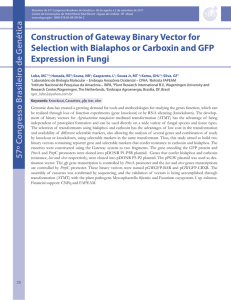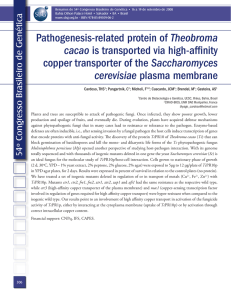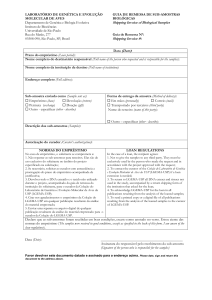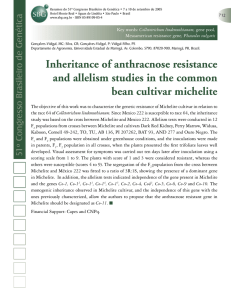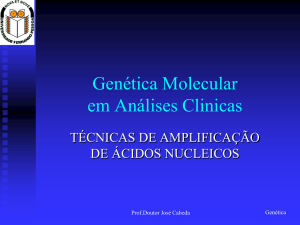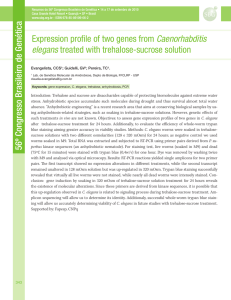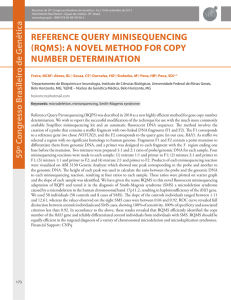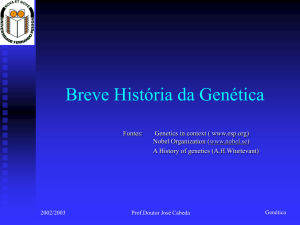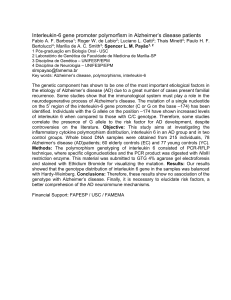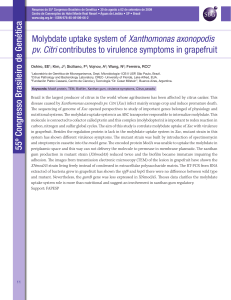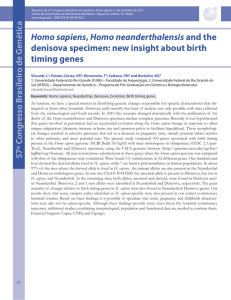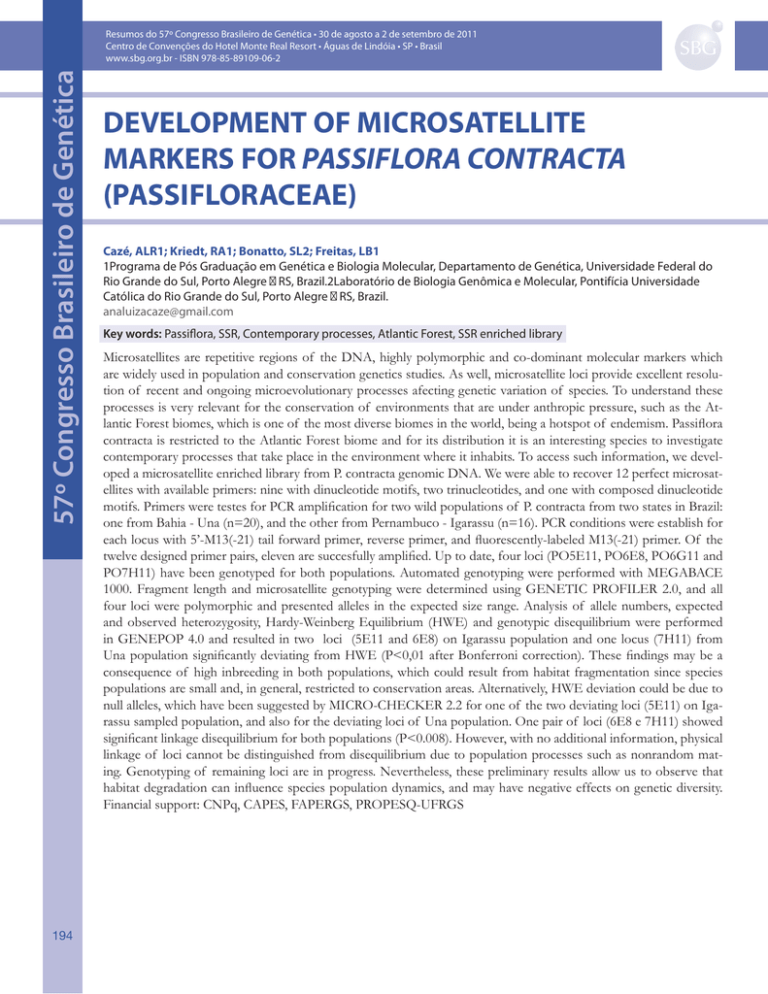
57º Congresso Brasileiro de Genética
Resumos do 57º Congresso Brasileiro de Genética • 30 de agosto a 2 de setembro de 2011
Centro de Convenções do Hotel Monte Real Resort • Águas de Lindóia • SP • Brasil
www.sbg.org.br - ISBN 978-85-89109-06-2
194
DEVELOPMENT OF MICROSATELLITE
MARKERS FOR PASSIFLORA CONTRACTA
(PASSIFLORACEAE)
Cazé, ALR1; Kriedt, RA1; Bonatto, SL2; Freitas, LB1
1Programa de Pós Graduação em Genética e Biologia Molecular, Departamento de Genética, Universidade Federal do
Rio Grande do Sul, Porto Alegre � RS, Brazil.2Laboratório de Biologia Genômica e Molecular, Pontifícia Universidade
Católica do Rio Grande do Sul, Porto Alegre � RS, Brazil.
[email protected]
Key words: Passiflora, SSR, Contemporary processes, Atlantic Forest, SSR enriched library
Microsatellites are repetitive regions of the DNA, highly polymorphic and co-dominant molecular markers which
are widely used in population and conservation genetics studies. As well, microsatellite loci provide excellent resolution of recent and ongoing microevolutionary processes afecting genetic variation of species. To understand these
processes is very relevant for the conservation of environments that are under anthropic pressure, such as the Atlantic Forest biomes, which is one of the most diverse biomes in the world, being a hotspot of endemism. Passiflora
contracta is restricted to the Atlantic Forest biome and for its distribution it is an interesting species to investigate
contemporary processes that take place in the environment where it inhabits. To access such information, we developed a microsatellite enriched library from P. contracta genomic DNA. We were able to recover 12 perfect microsatellites with available primers: nine with dinucleotide motifs, two trinucleotides, and one with composed dinucleotide
motifs. Primers were testes for PCR amplification for two wild populations of P. contracta from two states in Brazil:
one from Bahia - Una (n=20), and the other from Pernambuco - Igarassu (n=16). PCR conditions were establish for
each locus with 5’-M13(-21) tail forward primer, reverse primer, and fluorescently-labeled M13(-21) primer. Of the
twelve designed primer pairs, eleven are succesfully amplified. Up to date, four loci (PO5E11, PO6E8, PO6G11 and
PO7H11) have been genotyped for both populations. Automated genotyping were performed with MEGABACE
1000. Fragment length and microsatellite genotyping were determined using GENETIC PROFILER 2.0, and all
four loci were polymorphic and presented alleles in the expected size range. Analysis of allele numbers, expected
and observed heterozygosity, Hardy-Weinberg Equilibrium (HWE) and genotypic disequilibrium were performed
in GENEPOP 4.0 and resulted in two loci (5E11 and 6E8) on Igarassu population and one locus (7H11) from
Una population significantly deviating from HWE (P<0,01 after Bonferroni correction). These findings may be a
consequence of high inbreeding in both populations, which could result from habitat fragmentation since species
populations are small and, in general, restricted to conservation areas. Alternatively, HWE deviation could be due to
null alleles, which have been suggested by MICRO-CHECKER 2.2 for one of the two deviating loci (5E11) on Igarassu sampled population, and also for the deviating loci of Una population. One pair of loci (6E8 e 7H11) showed
significant linkage disequilibrium for both populations (P<0.008). However, with no additional information, physical
linkage of loci cannot be distinguished from disequilibrium due to population processes such as nonrandom mating. Genotyping of remaining loci are in progress. Nevertheless, these preliminary results allow us to observe that
habitat degradation can influence species population dynamics, and may have negative effects on genetic diversity.
Financial support: CNPq, CAPES, FAPERGS, PROPESQ-UFRGS

